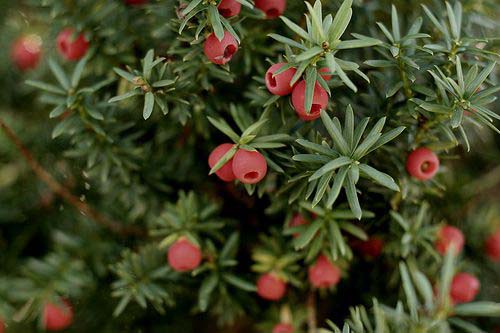Jungian Therapy, the Self & the Christmas Tree


Who would think that the familiar Christmas tree is an ancient symbol of the Self, in the way that Jungian therapy uses that term? Yet the evidence shows that Jungian therapy is correct about this.
The symbol of the Christmas tree is quite unusual. For one thing, it’s quite unclear how it fits with traditional Christian narrative about Christmas.
Jung on the Christmas Tree
Jung whets our appetite with some striking commentary:
…Everyone decorates Christmas trees or hides Easter eggs without ever knowing what these customs mean. The fact is that archetypal images are so packed with meaning in themselves that people never think of asking what they really do mean…. What the Christmas-tree might be, our forefathers knew even less than ourselves, and it is only quite recently that we have bothered to find out at all. The archetype…causes man to utter words and perform actions whose meaning is unconscious…
C.G. Jung, Collected Works, v.v. 8 & 9.1,
Christmas Tree as World Trees,
The unusual tree in our living rooms at Christmas actually represents the “World Tree”, the tree containing the universe in many mythological traditions. In particular, this tree is really the Yggdrasil from Nordic mythology of the pre-Christian era. In Nordic myth, the universe is formed of nine independent worlds, each part of the great Yggdrasil — a vast “Forest Ash” or yew tree, growing in Ginnungagap (“the great emptiness”).
Roots: the 3 Legged Christmas Tree Stand
Traditional Christmas tree stands had 3 legs. This isn’t accidental: in Nordic myth, the Yggdrasil tree had 3 roots, associated with the three Norns, the Nordic goddesses of fate, and with past, present and future. The threefold Christmas tree stand symbolizes the rootedness of the World Tree.

Who knew?
Tree Symbolizes the Self in Jungian Therapy
Jung thoroughly studied the tree as a symbol of the Self, which is to say, the whole of the personality. With roots in matter, in the earth, and branches in the sky, gaily coloured ball decorations which symbolize stars and planets, shiny tinsel garlands that represent the rainbows that connect together all the nine worlds of Yggdrasil, it is a marvellous symbol of the wholeness of psyche. As the poet Walt Whitman says, for all of us, “I am large, I contain worlds” And so each of us does in Jungian therapy.
Very best wishes for the holidays,
[cta]
PHOTO: © All rights reserved by Forest Eyes
VIDEO: “Worlds’ Largest Tree”, by cannibal17
© 2011 Brian Collinson 2238 Constance Drive, Oakville, ON (near Mississauga)

Robert G. Longpré
Dear friend – thank you for this post on the Christmas tree – I wish you the best in the days to come with hopes that we can meet again before the heat of summer. I will be in T.O. sometime in May (or earlier). I hope when I know the dates that we can again get together for a good cuppa.
jamenta
May you enjoy the comfort and peace of your X-Mas tree and holiday spirits Brian.
Brian C
Thanks very much for your comment, John. I hope that your Christmas has been a great one, full of love, peace and meaning.
Paul DeBlassie III PhD
Brian….holiday wishes and many thanks for inspiration about the world tree, the self and meaning!
Brian C
Thank you for your comment, Paul. Wishing you all the very best of the season, and its symbols of the Self.
peter dewick
And there is so much more. The Yew tree is the longest lived tree in Europe. They are found in the oldest church graveyards throughout Europe. The graveyards and Yew trees predate the churches. All parts of the Yew tree are poisonous to humans except the sweet red flesh surrounding the poisonous seed. It’s wood was used to create bows and other weapons. The trade in staves of yew was so important that right into the age of gunpowder Britain imposed a tax of yew staves on the import of Spanish wine. Young trees were harvested at Christmas time or prior to that at Yule tide. The poisonous sap was less active then. It is nearly certain that the origin of the stories of the world tree, Yggdrasill, is the Yew tree. Yggdrasill was said to be an evergreen Ash. The common Ash tree is deciduous and not evergreen. But one name for the Yew tree in old norse is barraskr, or needle Ash. The story of Yggdrasil says that deer nibble on its needles. And while the Yew tree is highly toxic to humans, deer prefer the needles of the Yew tree over other fodder. The Yew tree was the sacred tree of Europe associated with everlasting life and planted in grave yards. It’s wood and even the poison collected from it was highly valuable. The people would sit under the canopy of the Yew tree with the stars decorating it’s foliage. Sitting at the edge of the canopy they could see the fixed stars rotate slowly around a single point in the night sky, which was found right at the top of the Yew tree. It was the north star. At northern latitudes if one sits on the sun side at the edge of the canopy of a typical Yew tree, the north star appears perched on top of the leader of the tree. All the other stars rotate around it throughout the night. The roots of Yggdrasil are the 3 norns, birth, life, death, past, present, future, creation, duration, destruction.